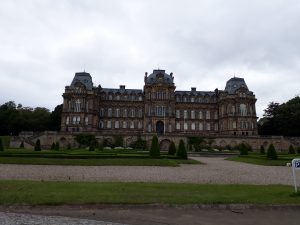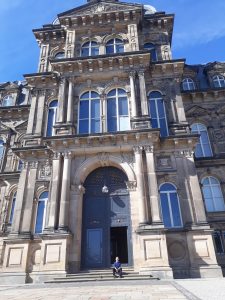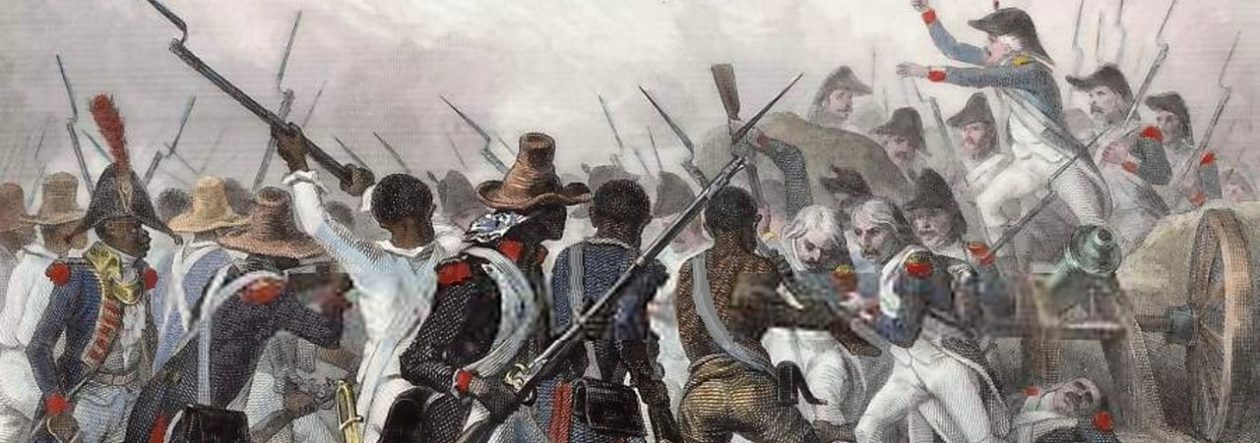From June 18-22, I had the opportunity to spend some time at the Bowes Museum to work with the staff there in developing a programme for the Age of revolution project. Having never been to County Durham, or the North East in general, I was taken with the beautiful countryside of Teesdale and the surrounding area – it’s certainly a very scenic part of the United Kingdom! The Bowes Museum itself fits in with the surrounding aesthetic: built in the style of a French chateau, it reminded me somewhat of the Royal Villa in Monza that I visited as part of a University of Kent trip to Italy this past April.

The Bowes Museum was the vision of John and Josephine Bowes, both art lovers who wished to create a museum situated in the North East to house their vast and varied collection of paintings and objects. Though both had died by the time of the museum’s opening in 1892, their vision created a space and a legacy that has lasted to this day, and it is one that continues to develop. Among the museum’s collection is a range of materials relating to Napoleon and Napoleonic Europe, and it is this collection that I sought to view to assist Bowes in developing a project in conjunction with Kent.

On the Monday I met Julia Dunn, Education Co-ordinator at the Bowes Museum and my principal contact prior to my trip up. She gave me a tour of the museum, both on the public side and behind the scenes, to give me an opportunity to view first-hand some of the artwork and artefacts that might form elements of the enterprise, as well as some other interesting items including The Silver Swan, an automaton dating from 1773 that ‘catches’ a fish in a 32-second display! As fascinating as this and other objects/artwork were, I was there to view Napoleonic material, and to this end Bowes has pieces that are just as interesting: I would argue more interesting, and that is not simply because of my own bias! A Staffordshire-made ceramic jug depicting Napoleon made between 1802 and 1810 particularly aroused my interest – why was such an item being made in Britain at this time? Another object with intriguing implications was a French-made snuff box depicting Napoleon dating from the 1830s, perhaps suggesting that the ‘allure of Napoleon’ (to steal the name of an exhibition put on by the museum last year) lasted beyond his fall in 1815, and even his death in 1821.
Over the course of the next few days I met with staff at the Bowes Museum involved in different areas of running the museum, and I began to get a practical sense of how a Napoleon-based project targeted to upper Key Stage 2 and lower Key Stage 3 students might come together. Working with Julia and her team over a series of meetings, we were able to put together the framework of the project at an encouragingly quick rate over the course of the week. To this end Julia and I met with Dr Thomas Stammers of the University of Durham, an expert on French history of the long nineteenth century. Dr Stammers co-curated the ‘Allure of Napoleon’ exhibition at the Bowes, so he is very aware of the nature of the museum’s collection; his advice and expertise were very welcome in helping to formulate our plans going forward. It was a bonus to have this meeting in Durham itself, with the cathedral forming a very pleasant backdrop to a stimulating chat over tea – I’d love to go back soon and have a proper wander!
One of the key challenges that we had to address was considering how to integrate this project within the parameters of the national curriculum; an overwhelming insistence on British-centric history in the curriculum means that we need to ensure that there is a significant British dimension to ensure that the project is sufficiently relevant. One possible method would be to encourage students to think about how they would feel if they were living in Britain when the nation was at war with Napoleon’s empire. Ultimately Napoleonic history is European history, and indeed global history, and it would be remiss to attempt to divide Britain away as a separate entity, despite Napoleon’s own attempts to do so through the Blockade. However, given the nature of the curriculum, it would not be wise to attempt a project that relegates Britain to a secondary position, and great care will be taken to ensure that this is not the case, even though there is plenty about Napoleon’s story that is both fascinating to students and does not involve Britain to any great extent. Still, the game must be played as the rules dictate, and my own snide comments will not change anything! It is certainly different from when I was at school, and there was very little British history on the syllabus at any level – how times have changed!
In order to learn more about what teachers are looking for in a project of this nature, I was fortunate enough to attend a conference for key stage 2 and 3 history teachers at Spennymoor, an opportunity arranged by Julia that I was most grateful for. Speaking to teachers underlined that we had to be sure that the project suited curriculum guidelines – it would not have garnered any interest had we ignored these requirements and planned something that did not directly link to government guidelines for the teaching of history at key stages 2 and 3. In the course of the conference Julia and I spoke to a number of teachers and encouraged some solid interest in our venture, and as a result we have three schools signed up to undertake the workshop and outreach programme this coming autumn. My experiences at the conference underlined how vital it is to talk to professionals in the education sector and to garner their views on the project and the extent to which it complies with the guidelines that they are required to follow. Fortunately, our work during the week meant that we had a proposal strong enough to encourage teachers to sign up, but consultation with them on the day and attending workshops gave us a greater understanding of how to comply with regulations and how the Napoleon project needs to be structured.
Upon returning from the conference on the Friday, I was introduced to a delegation from the Spanish embassy that was visiting Bowes to view the museum’s collection of Spanish paintings. They were embarking on a nationwide project to catalogue Spanish art in British galleries and museums, so the Bowes was an important place to visit given the presence of some Spanish masters’ works in their galleries. The delegation was kind enough to listen to our plans for the Napoleon venture, and indeed they took an interest in it, given Napoleon’s involvement with Spain. It was interesting to get their perspectives given that they had studied Napoleon at school, and it was fascinating to compare the Spanish approach to education – both past and present – with the British. It was also slightly surreal to be included in a picture on their Twitter page, but it’s clear that doing projects like these come with unexpected perks! In all seriousness, it was a pleasure to have met them, and it is always valuable to exchange ideas with as wide a network as possible, and certainly to take advantage of any fortuitous meetings.

Overall, my time at the Bowes Museum was highly productive and was tremendously helpful in terms of visualising the transition from planning to delivering this project centred on Napoleon Bonaparte. By meeting with museum staff, outside experts, and the teachers that will potentially be bringing students to the Bowes, I was able to develop and refine the existing ideas in conjunction with Julia, with whom I feel I developed a very goo working relationship over the course of the week. It was a pleasure to be able to work at the museum; it is a stunning building, and the view from the library on the top floor certainly provided a wonderful aesthetic against which to work. I’m very much looking forward to returning, not only to see more of the North-East but also to see the fruits of our labour! I am very grateful to Julia, and to all of the staff at Bowes, for their help and expertise, and to Dr Stammers for taking the time to meet with me in Durham. It was a fantastic week, and I’d encourage anyone on the Age of Revolution project that’s directly involved with a site to visit and hopefully you will have as varied and as productive a week as I did!
